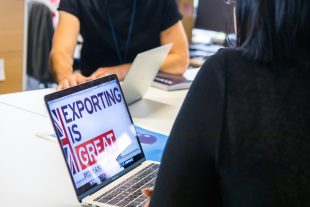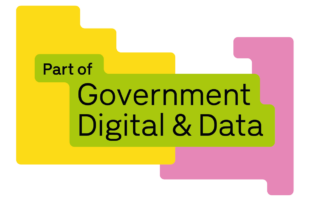DIT workplace image (August 2019)
The Digital Data and Technology (DDaT) team at the Department for International Trade (DIT) is about 200 strong. Our work underpins UK trade, including the government’s negotiations on free trade agreements (FTAs), investment in the UK, and the import and export of goods and services. To encourage people who are thinking about joining DDaT, we previously blogged on how to submit a good application and now service owner Anais gives her tips on interviewing well.
How do I get started?
It’s always good to do some research about the role you're applying for so that you can communicate clearly why you want to join a team and why that opportunity is right for you. Have a look at some of our blogs about the roles in DDaT. They tell you what it’s like being a product manager, content designer or working in our tech team.
What’s the best way to prepare for an interview?
Even for the most experienced among us, talking through our experience can be challenging so it’s worth doing some mock interviews. It’s not an easy task to clearly convey the complex situations which you’ve navigated through to deliver impact. And we all know practice makes perfect!
What does a remote interview look like?
We’re currently doing all our interviews remotely on MS Teams. We know this can present its own challenges. Some of us don’t have a dedicated workspace; family and pets can make unexpected background appearances, and our WIFI can drop out. We understand all this as we’ve been working remotely for a few months now, so don’t worry about the things you can’t control.
Instead, think about the things you can do to maximise the chances of the interview going smoothly. If you don’t routinely use MS Teams, it’s worth familiarising yourself with it before the interview. It also helps if you can find a calm and quiet space with good connection. Take your time to articulate clearly so the panel can follow what you’re saying you, even if the WIFI isn’t perfect.
We treat online interviews the same as we would an in-person interview and expect you to do the same. It’s best if your video is on as it helps us to connect with you and build rapport.
If you need any adjustments for your interview for accessibility reasons, please do mention this to your recruiter and they’ll be able to help.
Who will be interviewing me?
We usually interview as a panel of 3. You’ll typically have a person who’s advertised the role and members of the professional community that the role sits within. The panel spends the first 5 minutes introducing themselves and the role available, and then talks you through the format of the interview.
What is the format for the interview and how long will it be?
We might ask you for a brief introduction about yourself and your work history but we don’t expect this to take more than a few minutes. We’ll have read your cover letter and CV and will have them to hand.
Then we’ll typically ask between 4-6 questions. This is the core of the interview. We’ll be taking notes throughout to remember your key points, so don’t be put off by us typing. We’re assuming each question will take about 5 minutes, including any follow up questions we might have. This usually leaves us with 10-15 minutes at the end of the interview for you to ask questions and to talk about next steps.
Successful interviews can end after as little as 30 minutes or run the full hour so don’t read anything into how long it takes. The key thing is that your answers give us thorough examples, helping us understand what you’ve done, how you’ve done it, and why this was challenging and impactful.
What is the STAR method and how can it help me?
The STAR method is helpful for concisely communicating how you’ve delivered results in challenging environments and gives the panel the information they need.
For each interview question, talk through one detailed example from your experience, clearly setting out the situation you were in, the task you faced, the actions you took, and the results you got. The focus of your answer should be on the actions and results, so don’t spend too much time setting out the situation and task. Getting the balance right is something you can practice before the interview.
How long is the recruitment process?
At DDaT we will typically shortlist up to 5 candidates for a role and make our decision on the back of an hour’s interview with each candidate. Depending on interview scheduling, we’ll usually come back to candidates telling them how they did within a month of the interview, or sooner.
If you’re offered a role, we go through a due diligence process that will include vetting for the right security level for the role. The level of vetting required will determine how quickly you can start your role
Is there anything else I should know?
You can read and subscribe to our blog channel Digital Trade to find out what the DDaT directorate does and how we talk about our work. This may also help you gain insight from teammates who are in roles similar to those you are interested in.
Another useful read is this in-depth feature about us in Freshmilk.
You can find more information about our recruitment process as well as our latest job opportunities on our career pages.
Leave a comment on this blog or send any questions to digitaltalent@trade.gov.uk


